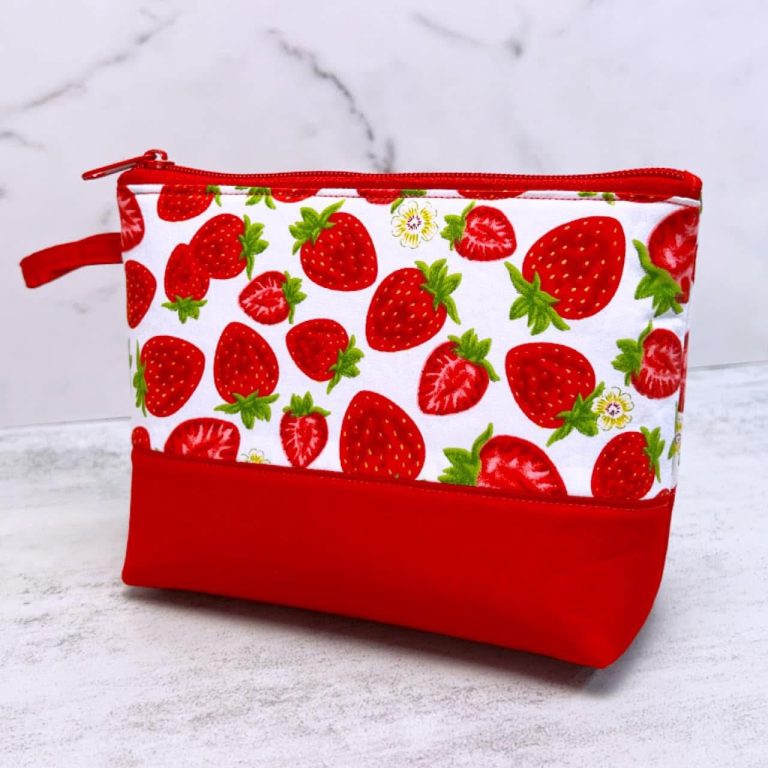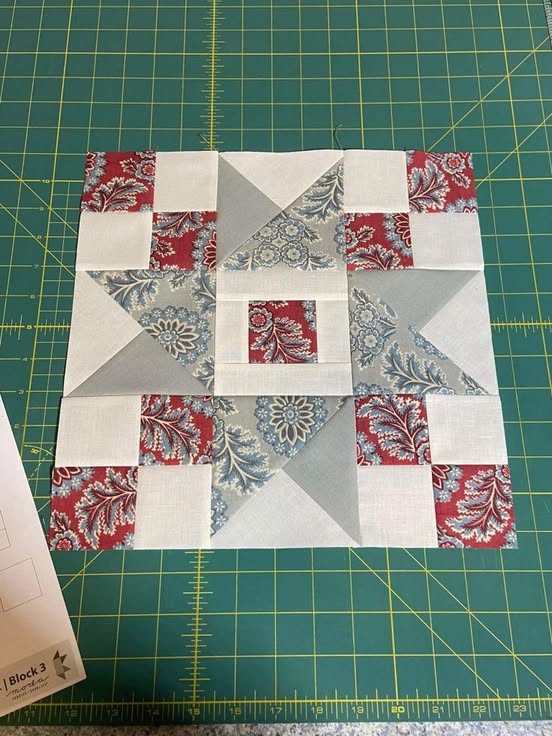
Quilting is an art that combines tradition, creativity, and technique. If you’re new to quilting or looking to sharpen your skills, mastering the basics is essential. One of the best ways to begin is by mastering classic quilt blocks.
These blocks have stood the test of time and are a staple in the quilting community. Whether you’re crafting a simple throw quilt or a complex masterpiece, these classic blocks provide a foundation for nearly every quilt pattern.
Learning to master classic quilt blocks allows you to create stunning, timeless designs. These blocks come in a variety of styles, ranging from simple geometric patterns to more intricate designs that require precision and patience.

The beauty of these blocks lies not only in their aesthetic appeal but also in the satisfaction of creating something with your own hands.
In this article, we’ll explore some of the most popular classic quilt blocks, offer tips on how to master them, and provide guidance on how to incorporate them into your own quilting projects.
If you’ve ever wanted to understand the structure and technique behind quilt blocks, this is the perfect place to start.
Before diving into specific classic quilt blocks, it’s important to understand what makes them so special. Quilt blocks are essentially the building blocks of a quilt, and mastering these basic components will set you up for success in your quilting journey.
Each quilt block consists of a series of fabric pieces, usually square or rectangular, that are stitched together to form a larger, cohesive pattern. These blocks are sewn together to create the quilt top, which is then layered with batting and backing fabric to form the completed quilt.
The key to mastering quilt blocks is precision. When piecing together each block, accuracy in cutting and stitching is crucial. Even slight misalignments can lead to an uneven quilt top. Always measure carefully, use a sharp rotary cutter for clean edges, and press seams flat to ensure your blocks are perfectly aligned.
Another important aspect of mastering classic quilt blocks is choosing the right fabric. While you can experiment with different fabrics, using high-quality cotton is often recommended for beginners due to its durability and ease of handling.
Quilt blocks come in many different designs, from simple shapes like squares and triangles to more complex patterns like stars or flowers. Each design has its own unique charm, but understanding the basic principles of quilt construction will help you tackle any block with confidence.
One of the most exciting aspects of quilting is the wide variety of classic quilt blocks available to quilters. While some blocks are simple and quick to make, others require more advanced techniques. Let’s take a closer look at some of the most popular blocks and tips for mastering them.
The Nine-Patch Block is one of the simplest yet most iconic quilt blocks. It consists of nine smaller squares arranged in a 3×3 grid. This block serves as the foundation for many other quilt patterns, making it an essential piece in a quilter’s toolbox. To master this block, start by cutting your squares accurately and sewing them together with consistent seam allowances.
The Four-Patch Block is another beginner-friendly option. This block is made up of four smaller squares arranged in a 2×2 grid. It’s perfect for practicing your basic piecing skills. To master the Four-Patch, make sure to press your seams carefully to avoid bulk and ensure each square is the same size.
The Log Cabin Block is a popular choice for both beginners and experienced quilters. It’s made up of strips of fabric sewn around a central square, creating a distinctive “log cabin” effect. To master this block, focus on keeping your strips of fabric consistent in width and trimming them neatly to avoid uneven edges.
The Flying Geese Block is a versatile block that can be used to create a wide range of patterns. It consists of a large central triangle with two smaller triangles on either side. To master Flying Geese, practice your triangle-piecing technique and ensure that all your angles are sharp and precise.
The Star Blocks are a bit more advanced, but once you’ve mastered the basics, they’re a great way to add intricate designs to your quilts. Popular star blocks include the Sawtooth Star and the Eight-Point Star. These blocks require careful cutting and piecing, so be sure to follow the instructions carefully and take your time.
Mastering classic quilt blocks takes practice, but there are several tips that can help you perfect your technique and improve the overall quality of your quilts.
First, always use a quarter-inch seam allowance when piecing your blocks together. This is the standard seam allowance for most quilt patterns and will ensure that your blocks fit together properly when sewn into the quilt top.
Second, make sure to press your seams as you go. Pressing is an essential step in the quilting process. Pressing your seams open helps reduce bulk, while pressing them to one side can help your blocks stay aligned.
Third, invest in a good-quality rotary cutter and cutting mat. These tools will help you cut your fabric accurately and efficiently, which is crucial when piecing together your blocks. A sharp blade will ensure clean cuts and reduce the risk of frayed edges.
Another useful tip is to use a design wall or a flat surface to lay out your quilt blocks before sewing them together. This allows you to see the arrangement and make any necessary adjustments before committing to the final layout.
Additionally, consider using a quilting ruler to help you measure and cut your fabric precisely. A ruler with clear markings will help you achieve straight lines and accurate measurements, which are essential for well-constructed blocks.
Finally, don’t be afraid to experiment with different fabric combinations. Classic quilt blocks can be given new life by using bold prints, subtle solids, or even scrappy fabrics for a more eclectic look. Have fun with your fabric choices, and don’t be afraid to think outside the box!
Even the most experienced quilters face challenges when piecing together quilt blocks. Here are some common issues you might encounter and tips for troubleshooting them.
Uneven Seams: If your seams are uneven or your blocks don’t line up correctly, it could be due to inaccurate cutting or stitching. Double-check your measurements, and use a consistent seam allowance. If necessary, trim your blocks down to the correct size before joining them together.
Puckered or Bunched Fabric: Puckering can occur when fabric shifts or pulls during sewing. To prevent this, make sure you’re using the correct needle for your fabric type and avoid pulling the fabric through the machine. If you notice puckering, gently press the fabric with an iron to smooth it out.
Blocks Not Matching Up: If your blocks don’t line up when you join them together, it could be due to uneven seam allowances or inconsistent fabric pieces. Check that your seams are consistent, and consider using pins or clips to hold your pieces in place as you sew.
Too Much or Too Little Fabric: If your block is too small or too large, it’s often the result of incorrect cutting. Make sure to measure your fabric carefully before cutting and double-check the instructions for block sizes.
By troubleshooting these common issues, you’ll improve your skills and be able to create flawless quilt blocks in no time.
Q: How can I ensure my quilt blocks are the right size?
A: Always measure your fabric before cutting, use a consistent seam allowance, and press your seams to prevent shrinking or stretching.
Q: What’s the best fabric for quilt blocks?
A: High-quality cotton fabric is recommended for most classic quilt blocks, as it’s easy to handle, durable, and gives the best results.
Q: How do I prevent my quilt blocks from becoming distorted?
A: Make sure to measure and cut your fabric accurately, press seams carefully, and use the right tools to ensure that your blocks maintain their shape.
Q: Can I use classic quilt blocks for modern quilts?
A: Absolutely! Classic quilt blocks can be modernized with bold fabrics, innovative layouts, and creative color combinations.
Q: What’s the difference between a quilt block and a quilt pattern?
A: A quilt block is a single unit that’s sewn together to create a larger quilt. A quilt pattern refers to the overall design of the quilt, which may include multiple blocks arranged in a specific layout.
Mastering classic quilt blocks is the foundation of becoming a skilled quilter. By understanding the basics, practicing key techniques, and troubleshooting common issues, you’ll be able to create beautiful, well-constructed quilts that you can be proud of.
Whether you stick to traditional patterns or incorporate your own modern twist, classic quilt blocks will always have a place in the quilting world.
We hope this guide has inspired you to get started or continue your quilting journey. Have you tried any of these blocks, or do you have tips to share? Leave us your thoughts in the comments—we’d love to hear your experiences and suggestions!
